Borders, Asylum Seekers, and Anzaldúa
- Michelle Wei
- Nov 30, 2018
- 5 min read
“The U.S. - Mexican border es una berida abierta where the Third World grates against the first and bleeds. And before a scab forms it hemorrhages again, the lifeblood of two worlds merging to form a third country - a border culture" Anzaldúa
I dislike discussing politics because I always get too upset. Thus, I tend to stay away from it so I can have peace of mind. However, there are certain times where I feel I must give my opinion and the incident on Sunday, November 25th, 2018 is one of those few times.

On Sunday, the U.S. Customs and Border Protection Agency officers fired tear gas into a group of migrants. These migrants were a part of a peaceful protest marching to the border in hopes of crossing into San Diego. These migrants are generally from Central America, in particular the Honduras, Guatemala, and El Salvador, seeking asylum in the U.S. through the port of entry at San Ysidro. These Central American countries, known as the Northern Triangle of Central America (NTCA) are considered some of the most dangerous places in the world. Women easily become victims of “rape, kidnapping, torture, or murder.” While most unaccompanied children are “fleeing violence in their community, avoiding recruitment into gangs,” and/or “avoiding exploitation in the form of prostitution or human trafficking” (Amnesty USA).
Adopted in 1948, article 14.1 of the Universal Declaration of Human Rights (UDHR) guarantees the right to seek and enjoy asylum in other countries. Moreover, in the 1951 Convention relating to the Status of Refugees article 31, it is stated that “irregular entry (i.e., without an entry visa or other documentation) will not have a negative effect on the asylum seeker’s application” (International Justice Resource Center). However, President Trump signed a Presidential proclamation suspending “the possibility of asylum for anyone entering the country between officially designated ports of entry” (the New Yorker). This decision not only goes against international asylum law, but it is also morally wrong. These migrants are refugees fleeing for their lives. The asylum process in America is inefficient and lengthy -- many applications may take months to even be processed and granted an interview.
In Anzaldúa’s “The Homeland, Aztlán,” she writes how “tension grips the inhabitants of the borderlands like a virus. Ambivalence and unrest reside there and death is no stranger” (Anzaldúa 26). The longer these refugees wait, the greater the threat of drug cartels, unforgiving U.S. immigration officers, and the fear of never having a peaceful life again becomes. Moreover, the deplorable living conditions of the camps cause heightened tensions as 5,000 people live in an area meant for 3,000 with more people arriving each day. The desperation of these refugees to come out in outbursts as seen on the 27th.
Around midday Sunday, a large group of migrants marched to the border and were met by a group of federal police from Mexico. The police tried to contain the migrants from entering the area around the border. However, a smaller group separated and tried to cross through the train crossing a few hundred feet away (The New York Times). They were stopped by the U.S. Customs and Border Protection Agency who teargassed the crowd of people. Tear gas is illegal to use in war; however, it is allowed for use on civilians for crowd control.
“Borders are set up to define the places that are safe and unsafe, to distinguish us from them” (Anzaldúa 25). The border between the U.S. and Mexico defines the U.S. as a “safe” place and Central America as “unsafe.” However, as we read in Orientalism, this is merely a definition given by the United States to establish power over its southern neighbors. Time and time again, it is observed that “the only ‘legitimate’ inhabitants are those in power, the whites and those who align themselves with whites” (Anzaldúa 25-26). To me, this idea is absurd. How can one define a person as “legitimate” or “illegitimate.” No one has the authority to declare if an individual is more of a person than someone else, especially if it is on the basis of race, gender, or age.
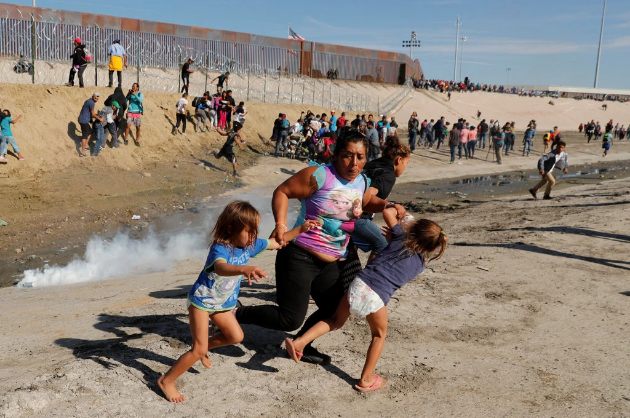
One of the most viral photos to surface throughout this event is one of Maria Lila Meza Castro, a woman from the Honduras bringing her five kids to meet with her husband in the States. This photo highlights the contrast between the rhetoric the Trump administration gave before and during the midterms about how the migrants and refugees coming into the U.S. are violent criminals. Kirstjen Nielson, the U.S. Homeland Security Secretary, stated that “we have confirmed that there are over 600 convicted criminals traveling with the caravan flow” despite authorities being unable to confirm the background and identities of all caravan members (Washington Post). Moreover, President Trump defended the use of tear gas arguing that the U.S. border officers “were being rushed by some very tough people” and announced “the bottom line: nobody’s coming into our country unless they come in legally” (Time). These so-called “convicted criminals” are women, children, and other refugees simply seeking a better life in the States.
The current political climate is creating a world where fear rules the mind and does not allow for utilitarian motives to exist because everything is political. Democracy rules but does not allow for discussion on those rulings. What we need is not more proclamations closing the borders, but conversations on how to better improve the immigration, asylum, and refugee process. Not more military being deployed to the border, but more personnel and humanitarian assistance making living conditions bearable and processing asylum seeker’s papers so they may live as human beings again.
Works Cited
Asylum & the Rights of Refugees.” International Justice Resource Center, 28 Mar. 2018, ijrcenter.org/refugee-law/.
Averbuch, Maya, and Elisabeth Malkin. “Migrants in Tijuana Run to U.S. Border, but Fall Back in Face of Tear Gas.” The New York Times, 25 Nov. 2018, www.nytimes.com/2018/11/25/world/americas/tijuana-mexico-border.html.
Blitzer, Jonathan. “Donald Trump, the Migrant Caravan, and a Manufactured Crisis at the U.S. Border.” The New Yorker, 14 Nov. 2018, www.newyorker.com/news/news-desk/donald-trump-the-migrant-caravan-and-a-manufactured-crisis-at-the-us-border.
Burke, Michael. “Trump Defends Use of Tear Gas at the Border.” The Hill, 26 Nov. 2018, thehill.com/homenews/administration/418359-trump-defends-use-of-tear-gas-at-the-border.
“Fleeing for Our Lives: Central American Migrant Crisis.” Amnesty International USA, 1 Apr. 2016, www.amnestyusa.org/fleeing-for-our-lives-central-american-migrant-crisis/.
“Obtaining Asylum in the United States.” U.S. Citizenship and Immigration Services, 19 Oct. 2015, www.uscis.gov/humanitarian/refugees-asylum/asylum/obtaining-asylum-united-states.
Ortiz, Jorge L. “Tear Gas: 'Harsh, Terrifying' and Legal to Use on Civilians.” USA Today, Gannett Satellite Information Network, 27 Nov. 2018, www.usatoday.com/story/news/2018/11/27/tear-gas-forbidden-war-but-legal-use-civilians-and-migrants/2133144002/.
Phillips, Kristine. “How a Photographer Captured the Image of a Migrant Mother and Her Children Fleeing Tear Gas.” The Washington Post, WP Company, 27 Nov. 2018, www.washingtonpost.com/world/2018/11/26/how-photographer-captured-image-migrant-mother-her-children-fleeing-tear-gas/?utm_term=.81564167b257.
“San Ysidro Land Port of Entry.” U.S. General Services Administration, 24 May 2018, www.gsa.gov/about-us/regions/welcome-to-the-pacific-rim-region-9/land-ports-of-entry/san-ysidro-land-port-of-entry.
Shoichet, Catherine E., and Leyla Santiago. “The Tear Gas Is Gone. But in This Shelter at the Border, the Situation Is Getting Worse.” CNN, 29 Nov. 2018, thebestfeeds.wordpress.com/2018/11/29/the-tear-gas-is-gone-but-in-this-shelter-at-the-border-the-situation-is-getting-worse-cnn-4/.
Stanley-Becker, Isaac. “Kirstjen Nielsen Asserts Women and Children Were 'Human Shields' in Tear Gas Attack at Border.” The Washington Post, WP Company, 26 Nov. 2018, www.washingtonpost.com/nation/2018/11/27/kirstjen-nielsen-claims-women-children-were-human-shields-tear-gas-attack-border/?utm_term=.f997d53397e1.
TIME. President Trump Strongly Defends Use Of Tear Gas Against Migrants At The Mexican Border. YouTube, 27 Nov. 2018, www.youtube.com/watch?v=Y1XHLt9R-SU.
“U.S. System for Refugee, Asylum Seekers Explained.” NBCNews.com, NBCUniversal News Group, 17 June 2011, www.nbcnews.com/id/43442030/ns/us_news-life/t/us-system-refugee-asylum-seekers-explained/#.XAGpc5NKi35.
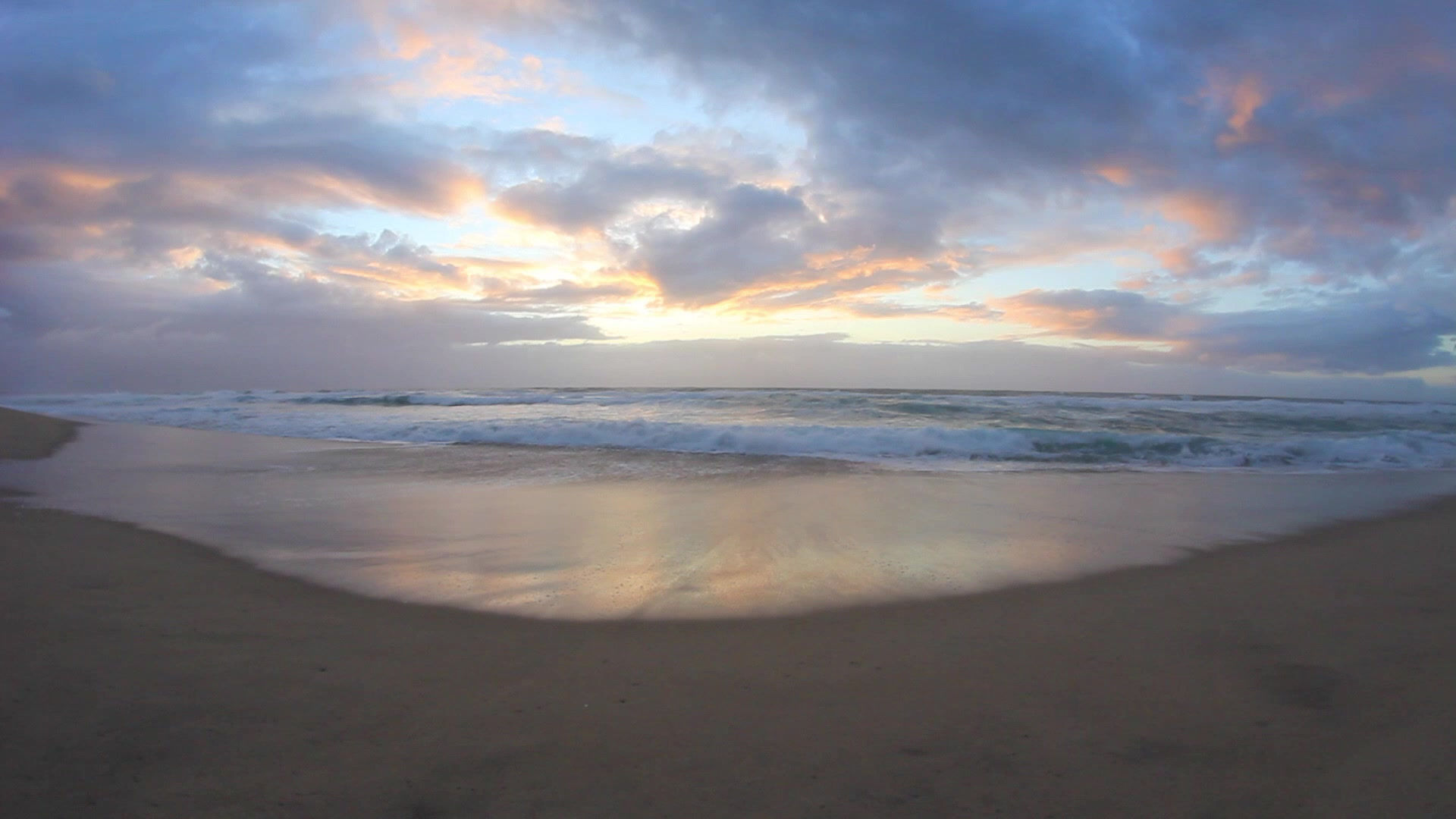






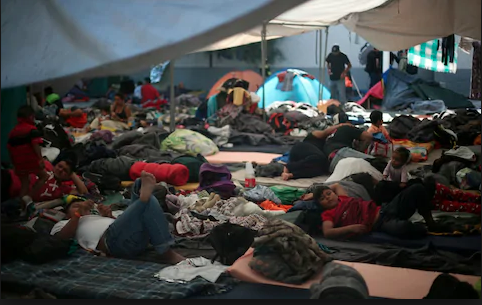

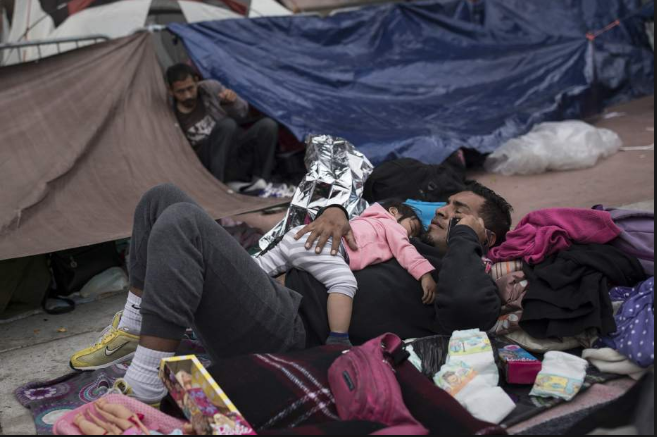

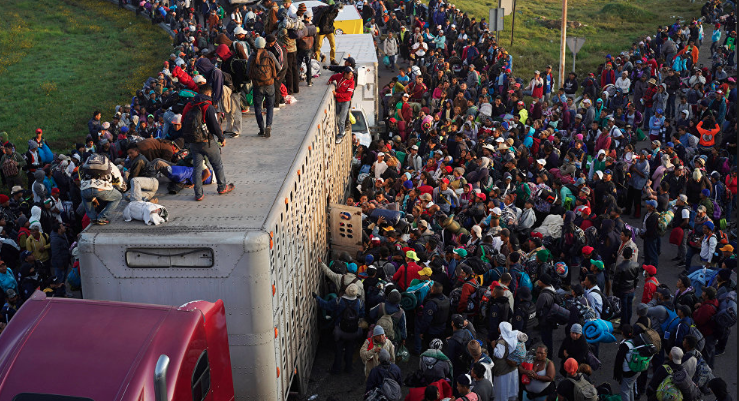









Comments